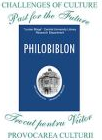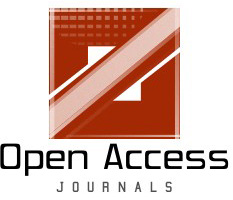Download Cover Page
IJESR_May_2019......
PARTICULAR
|
Page No.
|
 DE-DUPLICATABLE EFFECTIVE PROOF OF REPOSITORY
DE-DUPLICATABLE EFFECTIVE PROOF OF REPOSITORY
Niraj H Patel, Kiran Jeedi, Parsi Sai Teja, R Mounish Raja*
Abstract:
Storage outsourcing is becoming more and more enchanting to both industry and academic due to the advantages of low cost, high accessibility, and easy sharing. As one of the storage farm out, cloud storage gains extensive attention in modern years. Many companies as Amazon, Google, and Microsoft, provide their own cloud storage services, where users can upload their files to the servers, access them from various devices, and share them with the others. Although cloud storage services are widely utilized in current days, there still remain many security issues and potential hazards .Data purity(9) is one of the most important properties when a user outsources its files to cloud storage(2). Users should be convinced that the files stored in the server are not manipulated. Traditional techniques for protecting data purity, such as digital signatures, require users to download all of the files from the cloud server for verification, which may cause a heavy communication cost. These techniques are not suitable for cloud storage services where users may check the purity frequently, such as every hour. Thus, researchers introduced Proof of Repository (PoR)(2) for checking the purity without downloading files from the cloud server. Furthermore, users may also require several impressive operations, such as alteration, insertion, and deletion, to update their files, while maintaining the capability of PoR(2).
Download full Length
Paper......
|
1-7
|
 BUCKLING ANALYSIS OF CSCS AND CSSS RECTANGULAR PLATES BY SPLITDEFLECTION METHOD
BUCKLING ANALYSIS OF CSCS AND CSSS RECTANGULAR PLATES BY SPLITDEFLECTION METHOD
Momoh Habib, J.O. Onyeka, H.E. Opara
Abstract:
This paper presents buckling analysis of cscs and csss rectangular plates by splitdeflection method. The assumption was that the deflection, w is split into ; where the deflection was taken as the product of these two components in x and y directions. The study formulated the total potential energy function from principles of theory of elasticity. By direct variation, the energy function was minimized and equations for critical buckling loads were obtained. Two examples, one with edges 1 and 3 clamped, edges 2 and 4 simply supported and the other with edges 2, 3 and 4 simply supported and edge 1 clamped were used to test this method. The use of polynomial functions for both x and y components of deflection was adopted. Critical buckling loads (in non- dimensional forms) of the two examples for aspect ratios ranging from 1.0 to 2.0 (at increment of 0.1) were determined and compared with the values from previous study (Ibearugbulem et, al., 2014). From the comparison, it was observed that the maximum percentage difference of 0.196 was recorded. The small values of percentage difference from this study show that this present method is sufficient and reliable for classical plate theory (CPT) buckling analysis of rectangular plates.
Download full Length
Paper......
|
8-20
|
 FREE VIBRATION ANALYSIS OF CSCS &CSSS RECTANGULAR PLATE BY SPLIT-DEFLECTION METHOD
FREE VIBRATION ANALYSIS OF CSCS &CSSS RECTANGULAR PLATE BY SPLIT-DEFLECTION METHOD
Asomugha A.U., Onyeka J.O., Opara H.E.
Abstract:
This work presents free vibration analysis of rectangular plate by splitdeflection method. In this method, the deflection was split into x and y components of deflection. That is the deflection of the rectangular plate was taken as the product of these two components. Having made this assumption, the study went ahead to formulate total potential energy functional from principles of theory of elasticity based on work-error approach. This energy function was minimized by direct variation and equation for resonating frequency was obtained. Two illustrative examples were used to test this method. They are (i) plate with edges 1 & 3 clamped and edges 2 & 4 simple supported (CSCS), and (ii) plate with edge 1 clamped and the other three edges simple supported (CSSS). The first and second examples used polynomial function for both x and y components of deflection. Fundamental resonating frequencies (in non-dimensional forms) of the two plates for aspect ratios ranging from 1.0 to 2.0 (at increment of 0.1) were determined and compared with the values from previous study. From the comparison, it was observed that the maximum percentage difference of -0.07 was recorded for the first example at aspect ratios of 2.0 with non-dimensional resonating frequency of 13.72. For the second example, there was no difference between the present and previous studies.
Download full Length
Paper......
|
21-42
|
 Mixed ligand complexes of Cu(II), Ni(II), Co(II), Zn(II) and Cd(II) with Methionine and 8-Hydroxyquinoline
Mixed ligand complexes of Cu(II), Ni(II), Co(II), Zn(II) and Cd(II) with Methionine and 8-Hydroxyquinoline
Dr. Renu Singhal
|
43-48
|




 Call for Papers
Call for Papers












